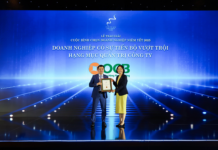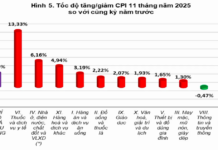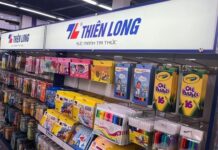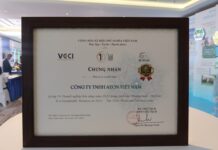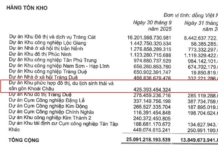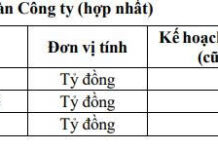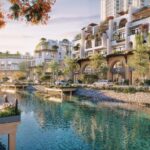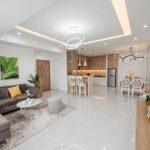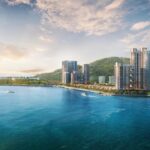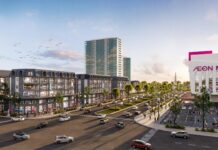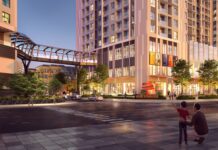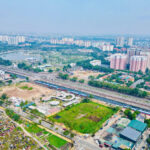Unlocking Vietnam’s First FTZ Potential
Free Trade Zones (FTZ) are designated geographical areas within a country where goods can be imported, stored, processed, manufactured, modified, and re-exported without incurring customs duties or other regulations. FTZs are established to implement mechanisms and policies aimed at attracting high-quality investment, finance, trade, tourism, and services.
With a long-standing foundation and growing popularity, there are currently 5,383 free economic/trade zones in 147 countries and territories worldwide. Many of Vietnam’s neighboring countries have successfully developed the FTZ model and transformed these areas into powerful economic drivers, including Malaysia, Singapore, and China.
China’s efforts to develop 22 FTZs over the past decade have paved the way for an economic reform strategy spanning coastal, inland, and border areas. Notably, the pilot establishment of the first FTZ in Shanghai is considered a historic milestone for the country’s economy. Specifically, after more than 10 years of establishment, the Shanghai FTZ has recorded 84,000 new businesses, attracted $59 billion in foreign investment, and achieved a 200-fold increase in GDP compared to 1990.
In contrast, Singapore, with an area equivalent to a district of Vietnam, has nine FTZs that have been developed since 1969. The efficiency of these FTZs has propelled Singapore to become the second-largest port in the Asia-Pacific region and a leading logistics hub in Asia. As a result, it has attracted more than 5,000 multinational companies and a large number of highly skilled workers.

Jurong Port – Singapore’s FTZ with outstanding economic efficiency
Following the global success of the FTZ model, the pilot establishment of Vietnam’s first FTZ has been proposed in the National Assembly’s resolution on piloting several mechanisms and policies for the development of Da Nang city. Accordingly, it is expected that by 2030, the FTZ will contribute 1-2% to the city’s Gross Regional Domestic Product (GRDP). By 2040, the contribution is projected to increase to 9.5% GRDP, reaching 17.9% GRDP by 2050.
According to experts, Da Nang’s strategic location, which includes a deep-sea port, an international airport, a coastal border area, and a land border, as well as being the endpoint of the East-West Economic Corridor, makes it an ideal location for a free trade zone. Among the city’s areas, Lien Chieu, with its deep-sea port, is the most favorable for establishing an FTZ. Currently, this area is home to high-tech industrial parks and is envisioned to become a technology community similar to Silicon Valley in the US.
With the foundation of the three pillars of the Da Nang free trade zone, Lien Chieu Port, and the high-tech park, Lien Chieu is emerging as one of the most dynamic areas in Da Nang, attracting international corporations to build shopping centers with high-quality services and diverse commercial activities connected to the city center.
Experts believe that the impact of large-scale planning will significantly influence Da Nang and Lien Chieu, creating a “breakthrough space” for various economic sectors, particularly the real estate market.
Opportunities and Challenges for the Local Real Estate Market
“The new-generation Da Nang Free Trade Zone is closely linked to Lien Chieu Port and the development of the real estate market in the northwestern region,” affirmed Architect Tran Ngoc Chinh, Chairman of the Vietnam Urban Planning and Development Association and former Deputy Minister of Construction.
As an important growth pole in the city’s northwest, Lien Chieu District is on the cusp of transformation, with more evident potential than ever before. However, the urban landscape and real estate in the area lack well-planned and integrated projects to retain international experts, entrepreneurs, and intellectuals.
A practical survey reveals that Lien Chieu District currently has the highest population density in Da Nang, with nearly 220,000 people. Additionally, there is a “gray matter” workforce, including experts and highly skilled labor, following the FDI wave into the FTZ, estimated at 21,000 workers by 2030, 90,000 by 2040, and reaching 127,000 by 2050.
In contrast to the dense demand, which is expected to continue rising, there is a scarce supply. The Lien Chieu district predominantly comprises small-scale land and houses, with only two apartment building projects. One of these, The Ori Garden, a mid-range apartment project, has achieved a remarkable sales rate of over 98%. Given the existing demand from natural population growth and the need for modern urban development to retain high-quality labor on increasingly scarce land, experts unanimously agree that the development of apartment buildings in this area is inevitable and necessary right now.

Failing to meet the surging demand, apartments are the inevitable trend in Lien Chieu (Photo: Tran Mien)
In the overall Da Nang market, according to the latest report from Batdongsan.com.vn, apartment buildings led the way in terms of both the rate of increase in asking prices and the level of interest during the first three quarters. Da Nang’s apartment price index has set a new record, increasing by 95% compared to the first quarter of 2023. This surge can be attributed to the emergence of numerous luxury apartment projects in recent times, pushing up the average price level.
Notably, the proportion of searches for Da Nang apartments by Hanoi investors has been increasing and rose by 90% in the second quarter of 2024 compared to the previous quarter. This partly demonstrates the allure of the Da Nang market to investors from other provinces. As demand rebounds, the prospects for the apartment segment are also expected to improve, especially in areas experiencing exceptional infrastructure growth and demand, such as Lien Chieu.
The Golden Opportunity: Unveiling Thanh Hoa’s Billion-Dollar Real Estate Venture
After 2 years of bustling construction, the綜合服務中心 Project in Dong Huong Ward, Thanh Hoa City, suddenly came to a halt and has remained stagnant for years.
The Eastern Promise: Real Estate Development with a Cultural Twist
Eastern Era has proven its sustainable development strategy with the success of the Vaquarius project in Van Giang, Hung Yen. The project showcases the company’s ability to create urban cultures that are deeply rooted in local traditions and communities. This achievement stands as a testament to Eastern Era’s commitment to fostering a harmonious relationship between development and the preservation of cultural heritage.
Golden Standards for Sustainable Investments
With its attractive financial policies, Conic Boulevard offers investors a straightforward path to profit optimization without requiring a substantial initial investment. The project boasts high liquidity, thanks to its prime location within an established residential area with a complete infrastructure. This means units are ready for handover, ensuring long-term and sustainable benefits for investors.






